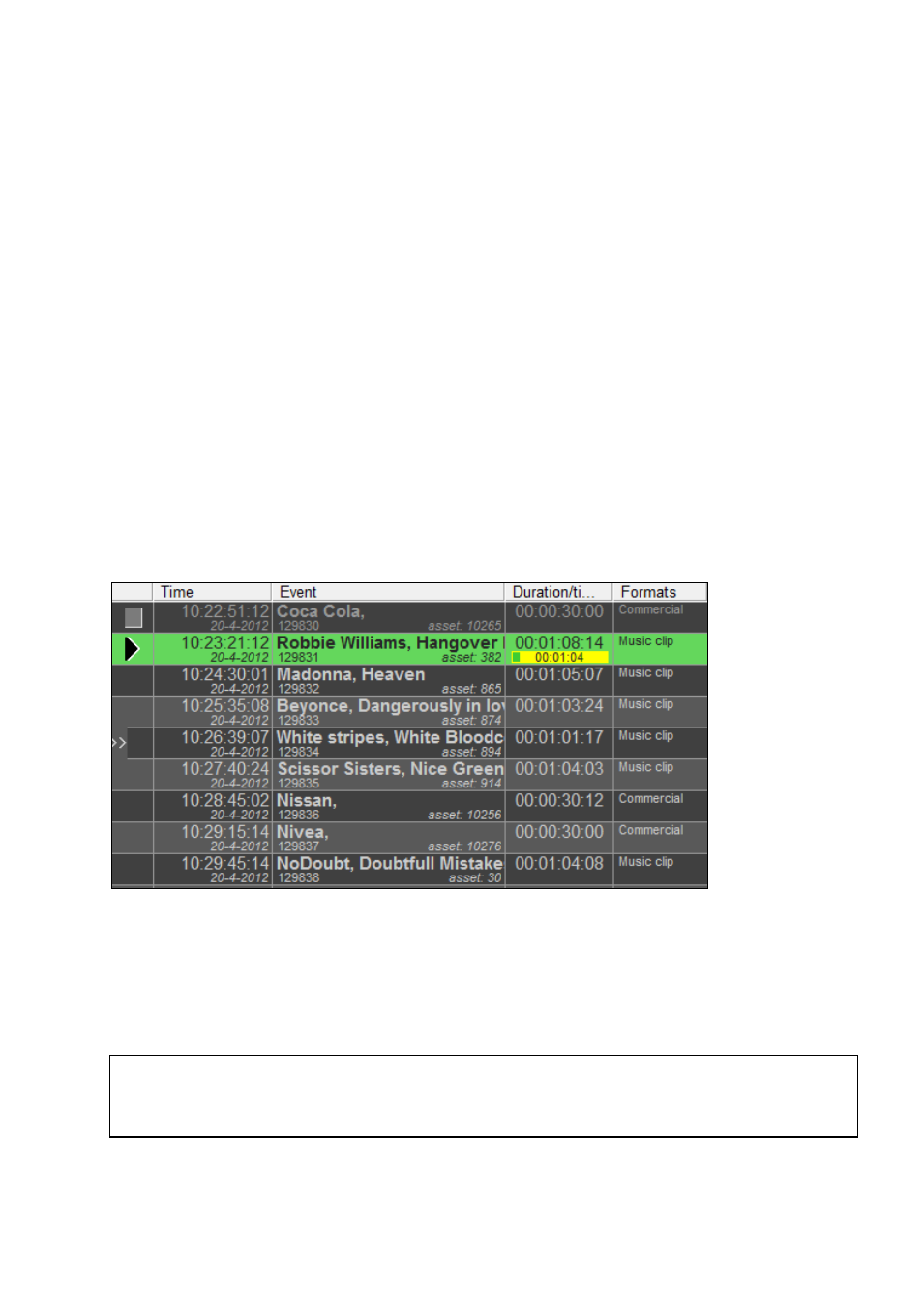Sequencer, 11 sequencer – Grass Valley K2 Edge Engineering Manual v4.1 User Manual
Page 30

K2 Edge Engineering Manual- document version: 4.1 - Page 30
11
sequencer
The sequencers send commands to nexos and start applets. The sequencers will store main Events
for the next 10 minutes in memory, including all secondary events for these main Events.
Each broadcast set has its own sequencer. The sequencers for broadcast sets can be identified by the
seq_br[0..8] naming; [0..8] indicates the broadcast set. This means that the sequencer for broadcast
set 0 is identified by the seq_br0 link. All seq_br[0..8] are linked to the sequencer file. This means that
in case of an update, only the sequencer file needs to be overwritten.
The sequencers retrieve schedule information via a local dataserver.
nexusproc script
Use the nexusproc script to manage the Cobalt services.
Logs
To check the sequencer log:
# tail –f /var/log/seq_br0YYYYMMDD.log (0 is the sequencer number.)
The log will show Events that have been processed and all the commands that have been sent to
nexos. Below you find an example playlist in POC and an example sequencer log.
Events are added to the top of the log.
Example playlist in POC.
Configuration
The sequencers look for a local dataserver to retrieve schedule information from the Playout database.
Channel settings are retrieved from the TX/MAM database. The /system/blade.ini file (located on the
main and backup playout node(s)) defines the TX/MAM server
’s IP-address.
[COBALT]
system_db_ip=MAIN-DB
system_db_port=5020
Example excerpt from blade.ini.
